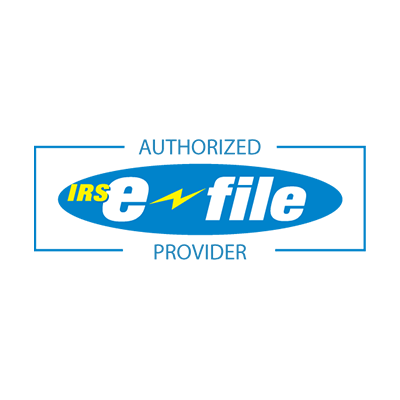When we arrive at a potluck dinner, we don’t show up empty-handed; invited guests contribute to the larger whole by supplying a portion and thereby doing their fair share. In the larger whole of society – more specifically in America – we are expected to do the same. Federal law requires those who drive heavy vehicles (those at least 55,000 pounds) to pay the HVUT (Heavy Vehicle Use Tax) due to their frequent use of the roadways for cargo transport. The HVUT is paid annually, in advance, and in full via Form 2290. The 2290 tax due date is August 31 for vehicles operated year over year and for vehicles put into operation (initially commissioned) by July 31.
The significance of Form 2290 for truck owners cannot be overemphasized. Timely filing of Form 2290 is crucial for truck owners to adhere to federal tax obligations, avoid financial penalties and operational disruptions. Missing the 2290 tax due date, failing to file Form 2290 and submit payment by the annual deadline, incurs a penalty of 4.5% of the total tax due, compounded monthly for up to five months.
Preparation Steps Before the 2290 Tax Due Date
“Be prepared” is a motto that has driven the Boy Scouts of America for over a century to survive in the wilderness. It’s a mantra that has helped people to save time, save trouble, and even save lives. It can save truck drivers from headaches when it comes to the 2290 tax due date.
One way to prepare is to verify vehicle information, starting with confirmation of the vehicle identification number (VIN). This information is critically important – it must be accurate because as implied by the name, it is how vehicles are identified.
Next, double check the taxable gross weight; the Federal Government categorizes vehicles based on this figure and assesses the HVUT accordingly. Finally, reconcile mileage records; collect and verify mileage logs for the tax period.
Document Compilation and Management
In order to meet tax obligations efficiently, it is recommended that one compiles a set of documents prior to the 2290 tax due date.
Here is a list of recommended documents:
- prior year’s Form 2290
- IRS payment proof
- vehicle registration details.
Whether your document retention preference is with paper copies or digital, it is important to organize them for easy access to streamline the filing process and facilitate future filings.
Calculating Your Tax Liability
Understanding the HVUT calculation is important for financial planning and helps set payment expectations prior to the 2290 tax due date. The tax is calculated based on vehicle weight and mileage. It applies to vehicles weighing at least 55,000 pounds (taxable gross weight). There is a tiered system based on gross weight. A truck weighing 55,000 pounds is taxed $100; this establishes the baseline. The tax increases by $22 for every 1,000 pounds above this baseline and maxes out at $550 for vehicles over 75,000 pounds.
There are exceptions, exemptions, and special conditions. Some vehicles are completely exempt from paying the HVUT, including vehicles used by federal, state, or local governments, those used by The Red Cross, non-profit organizations, mass transit authorities and qualified blood collection organizations. Agricultural vehicles that travel less than 7,500 miles annually and commercial vehicles that travel less than 5,000 miles annually are considered tax-suspended, meaning that they will not have to pay the HVUT. (Note: Even if your vehicle’s status is tax suspended, you are still required to file Form 2290 by the deadline each tax year.)
For those that are not tax-exempt or tax-suspended, they should be prepared to pay the tax in full at the time of filing. If filing using the traditional paper method, the payment can be made by check or money order. If e-filing, the payment can be made by credit/debit card or electronic funds withdrawal from a bank account.
Filing the Form 2290
Once you are prepared with all relative information including your business name and address, your EIN, your VIN, taxable gross weight of your vehicle and first used month (FUM) of your vehicle, you are ready to fill in the fields on the form. Be attentive to the details; errors on Form 2290 such as incorrect VIN could result in financial penalties, making it critical to double-check your data entry for accuracy before submitting.
Form 2290 can be submitted on paper by mail via the United States Postal Service or it can be e-filed digitally. E-filing has numerous benefits including reduced error rates, avoidance of postal service issues, faster processing and confirmation, and immediate receipt of the IRS-stamped Schedule 1 as proof of filing and payment. Beyond the 2290 tax due date, the Schedule 1 is required for renewing license plates and insurance tags, selling or leasing a truck, and re-entering the United States by crossing the border.
If choosing to e-file, be sure to select a reliable IRS-approved e-filing service with favorable user reviews and support options like i2290. After filing Form 2290 it is important to retain copies of filed documents and IRS confirmations, to set reminders for next year’s filing, and to update records.
Save Yourself the Hassle and the Fees
Don’t risk late fees by missing the 2290 tax due date. Avoid the penalties by E-filing with i2290! If you file Form 2290 by mail, there’s no saying when you’ll receive your stamped Schedule 1, and you may have to contest penalties if something goes wrong with the mail service. i2290 allows you to file confidently, with precision, effectively forecast tax obligations, maintain compliance, and avoid unnecessary penalties.
With i2290, you can enjoy the convenience of e-filing your return from anywhere with internet access, saving time and money, while reaping the additional benefits of easily accessible digitally maintained records for seven years, filing VIN corrections and weight increase amendments for free, and access to a world-class customer service team.
Create an account with i2290 today and answer a few questions about your vehicle and your business. Then for a small fee, we will do the calculations for you and generate your stamped Schedule 1 in a matter of minutes!
Special note: This article is for general purposes, and is not intended to provide, and should not be relied on for tax, legal, investment, or accounting advice. The best way to ensure you’re properly filing and paying appropriate taxes is by following IRS regulations and consulting with a tax professional.


